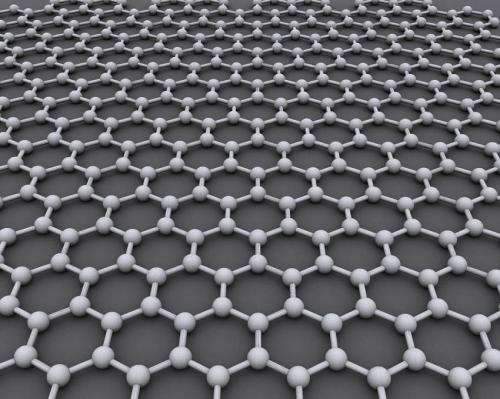March 30, 2015 weblog
Lightbulb using graphene is to go on sale this year

The BBC reported on Saturday that a graphene bulb is set for shops, to go on sale this year. UK developers said their graphene bulb will be the first commercially viable consumer product using the super-strong carbon; bulb was developed by a Canadian-financed company, Graphene Lighting, one of whose directors is Prof Colin Bailey at the University of Manchester.
The dimmable bulb is made with graphene—it has a filament-shaped LED coated in graphene. That poses some advantages. (1) Because of its conductivity the bulb can last longer. It is said to cut energy use by 10 percent; graphene allows it to conduct electricity and heat more effectively. (2) It is expected to be priced lower than some LED bulbs, said the BBC, and (3) Prof. Bailey told the BBC that "The manufacturing costs are lower and it uses more and more sustainable components."
He said in an interview that "graphene is just a material...a wonder material if you like, as it's got super properties—but really, it's the applications that sell it." Researchers are keen on figuring out how it may impact the UK economy with its "wonder" properties. The discovery of graphene in 2004 by Andre Geim and Konstantin Novoselov, two Russian-born scientists at the University of Manchester, earned the Nobel Prize for Physics.
Bailey said the lightbulb was just one application; others that are attracting research interest include a membrane, "where we can purify water." Focus points also include protective coatings; the use of graphene in batteries for energy storage; and the use of graphene for drug delivery. Speaking of the latter, Bailey said, "what we find is that when we put some of these graphene flakes into a solution, they are attractive to cancer cells."
Researchers are interested in graphene oxide, a modified form of graphene, which selectively targets cancer stem cells In combination with existing treatments, and may lead to tumor shrinkage and preventing the spread of cancer and its recurrence. In one investigation, a team prepared graphene oxide formulations for testing against different cancer types - breast, pancreatic, lung, brain, ovarian and prostate. The flakes inhibited the formation of tumor sphere formation. Can graphene oxide be effective across all or at least a large number of different cancers, by blocking processes that take place at the surface of the cells? One of the researchers said the findings showed that graphene oxide could possibly be applied as a lavage during surgery to clear cancer stem cells or as a drug targeted at the cancer stem cells.
The National Graphene Institute at the university opened earlier this month. The UK government has invested in the Institute and so has the European Regional Development Fund. The 7,825 square meter, five-story building has been designed as a research hub. More than 35 companies worldwide have already partnered with the university to develop projects.
The BBC said the material has already been incorporated in products including tennis rackets and skis; in development are car and aircraft frames and false teeth. The Graphene Stakeholders Association (GSA) stated that graphene is hailed by researchers and technologists as one of the most promising materials of the 21st century. Nonetheless, they said, "We are at a very early stage of understanding graphene and its potential as an enabling technology. There is much research, characterization, testing and development work to be done."
More information: phys.org/wire-news/189156643/g … ightbulb-moment.html
© 2015 Tech Xplore





















